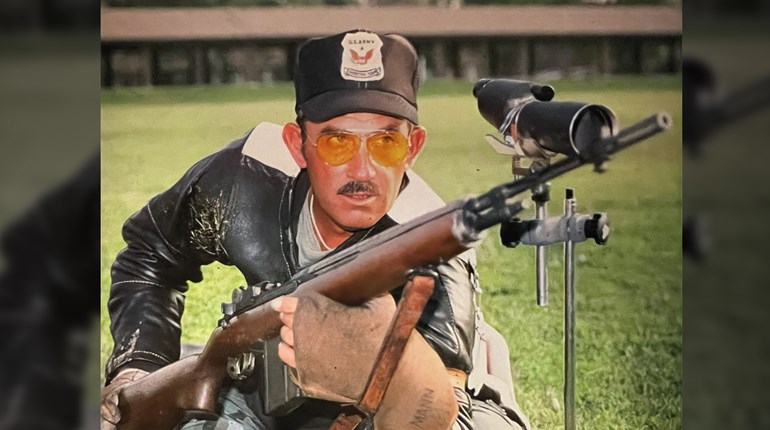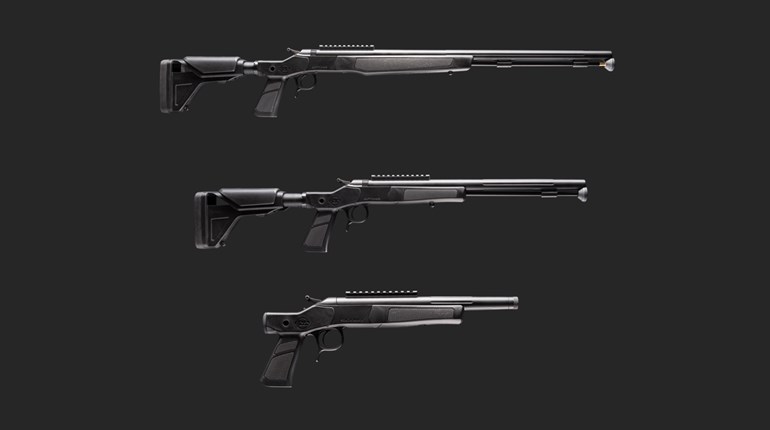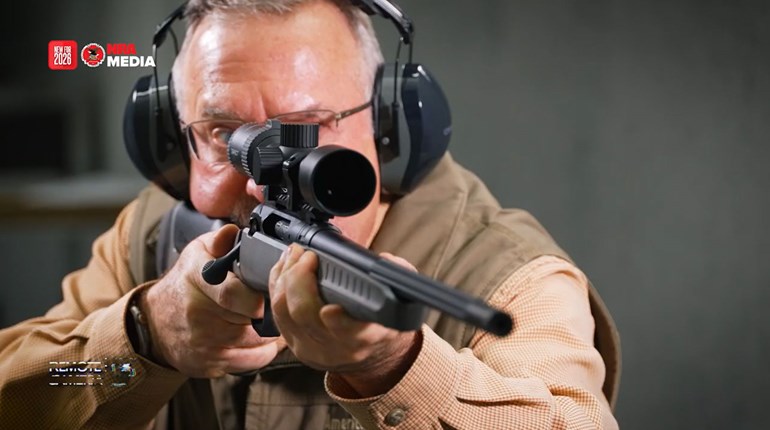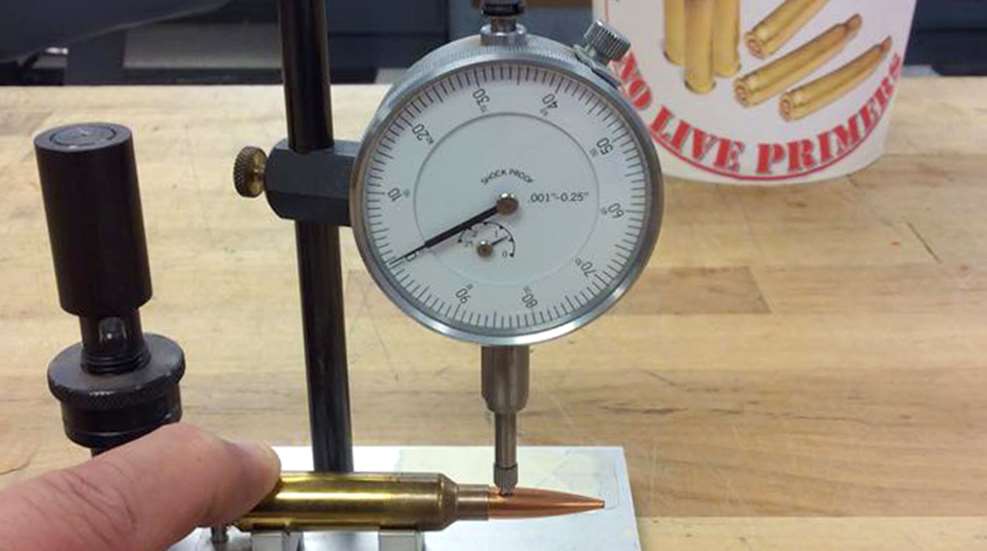
WARNING: All technical data in this publication, especially for handloading, reflect the limited experience of individuals using specific tools, products, equipment and components under specific conditions and circumstances not necessarily reported in the article and over which the National Rifle Association (NRA) has no control. The data has not otherwise been tested or verified by the NRA. The NRA, its agents, officers and employees accept no responsibility for the results obtained by persons using such data and disclaim all liability for any consequential injuries or damages.
Previously, we addressed factors affecting loaded-cartridge concentricity (a.k.a. TIR, or Total Indicator Runout). That refers to the bullet’s’ straightness in the case, which affects deviation as the bullet enters the barrel and is fired. This is best optimized by systematically reducing runout-inducing factors in one’s loading process and die adjustment. However, checking and sorting the thousands of cartridges an active high power shooter uses per season is excessively time-consuming.
Here, we’ll discuss minimizing TIR using standard, good-quality “hunting” dies, rather than highly-expensive match dies. We’ll do this with a single-stage press, rather than a progressive, as most new handloaders will have a single-stage.
First, a QUALITY-made tool for measuring TIR is essential for obtaining consistent, accurate results. Generally, measuring equipment is NOT a good area in which to skimp or economize, as one uses these tools throughout one’s handloading career. They form the basis for consistent reproduction of accurate ammunition lots. For the budget-conscious, the fact that high-quality tools hold their value very well helps reduce the sting. Moreover, they’re generally very easy to sell when no longer needed. Thus, whatever little loss one might take on depreciation should be considered as “rent” on the tools for the years/decades they are used. This author actually sold a used micrometer for MORE than he originally paid 20 years ago, although inflation probably accounts for the “profit.” Still, quality tools retain value, while junk tools do not.
This article will cite experiments the writer conducted and published over 20 years ago, but the techniques and measurements still remain valid. With truly advanced-design, high-quality and precisely-machined match dies, one gets more precision and less variation/TIR for their money. However, for those who are not sure they want to remain with the sport, or who wish to economize, it’s entirely possible to load very concentric ammunition using standard dies of the RCBS/Redding, etc. type.
A lesser-known approach to this is to use a rubber O-ring under the Full Length (FL) sizing die lock ring. These are easily found at hardware stores. Place the O-ring on the die body between the lock ring and the top of the press, leaving the lock ring loose. Then, run a lubed case into the die, and begin adjusting the die to give the desired sizing/case headspace—i.e. set the shoulder back to the desired dimension for one’s chamber.
Many tools exist for case headspace measurement. Among them, one which is quick and easy to use is the RCBS Precision Mic. It measures case headspace on a scale calibrated to one’s specific cartridge, such as .223 or .308, etc. Once this sizing adjustment is correct, run the sized case BACK into the die, to keep it centered and under tension. Then screw the lock ring down onto the O-ring to affix the die in place, and set the lock screw.
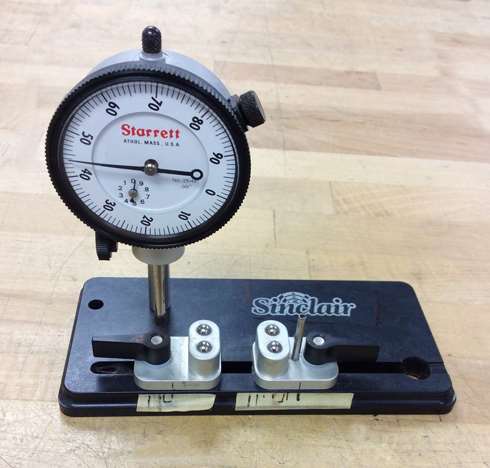
IMPORTANT: Be sure to leave enough clearance between the top of the press and the lock-ring to let the die “float” slightly if you exert pressure on it with your hand. This allows the die to “self-center” in use. Once the lock-ring screw is tightened, the above steps need not be repeated. Whenever re-setting the size die, as when changing calibers, or if changing from military (hard) to commercial (softer) brass, just screw the die into the press until the O-ring contacts top of the press. Then, test-size cases and measure them with your headspace gauge, adjusting the die slightly up or down until the desired measurement is repeatedly obtained. This method can noticeably reduce TIR.
NOTE: One maker of inexpensive loading gear incorporates an O-ring into their lock-rings, but this should not be confused with the method above. Their O-ring supplies friction to maintain the lock-ring in position on the die, rather than using a positive locking screw, and does not facilitate the method used here.
To further decrease seated-bullet runout, avoid excessively working case necks during sizing. Expander balls are routinely cited as a culprit in inducing neck distortion, which causes crooked bullet seating. A common solution is to remove the expander ball. However, standard dies are a must working with cases having just about any neck-thickness on the planet. Thus, they typically size the case neck down excessively, and then use the expander ball to bring them back up for the desired neck tension.
A good range of case-neck expansion (from sized/empty to expanded after seating the bullet) is 0.003-0.004 inch. For example, if the sized neck measures 0.300 inch before seating, it will measure 0.303-0.304 inch after bullet seating. This is usually considered enough neck tension for normal use with excellent accuracy, including cycling in an AR-15, AR-10, or M1A WITHOUT CRIMPING unless some problematic condition (e.g., feed ramp issue) is present. Excessive neck tension can reduce accuracy, in and of itself.
If one’s FL size die reduces case necks excessively for use without the expander ball, there are several remedies. One may take it to a machinist or send it to the manufacturer to be honed out to the desired dimension. One may also modify the die to accept interchangeable neck-sizing bushings (available in 0.001 inch diameter increments.) Avoiding expander balls also eliminates the need to lube inside the case necks (although brushing them clean is still recommended).
The results of an experiment comparing TIR in 50 rounds of .308 match ammo loaded using carefully-adjusted standard dies, vs. 50 using “Match” dies from the same maker that cost 3 times as much, both with O-rings are given below:
Standard Dies, TIR:
0.000” – 0.001” = 52%
0.001” – 0.002” = 40%
0.002” – 0.003” = 8%
None greater than 0.003”
Lesser-quality “Match” dies, TIR:
0.000” – 0.001” = 46%
0.001” – 0.002” = 30%
0.002” – 0.003” = 20%
0.003” – 0.004” = 4%
NOTE: Especially when using cases previously fired in a concentric chamber, as was done above, more advanced, industry-leader match dies can produce ammo with virtually no TIR when care is taken throughout the loading process.
NOTE: All “Match” dies are not created equal. Ask experienced, well-accomplished handloader/high power competitors which brands they have had excellent results from. Then, pay attention to the manner/degree with which they evaluate their results, as not all are equally methodical about such things.
SSUSA thanks the U.S. Army Marksmanship Unit for allowing the reprint of this article.















